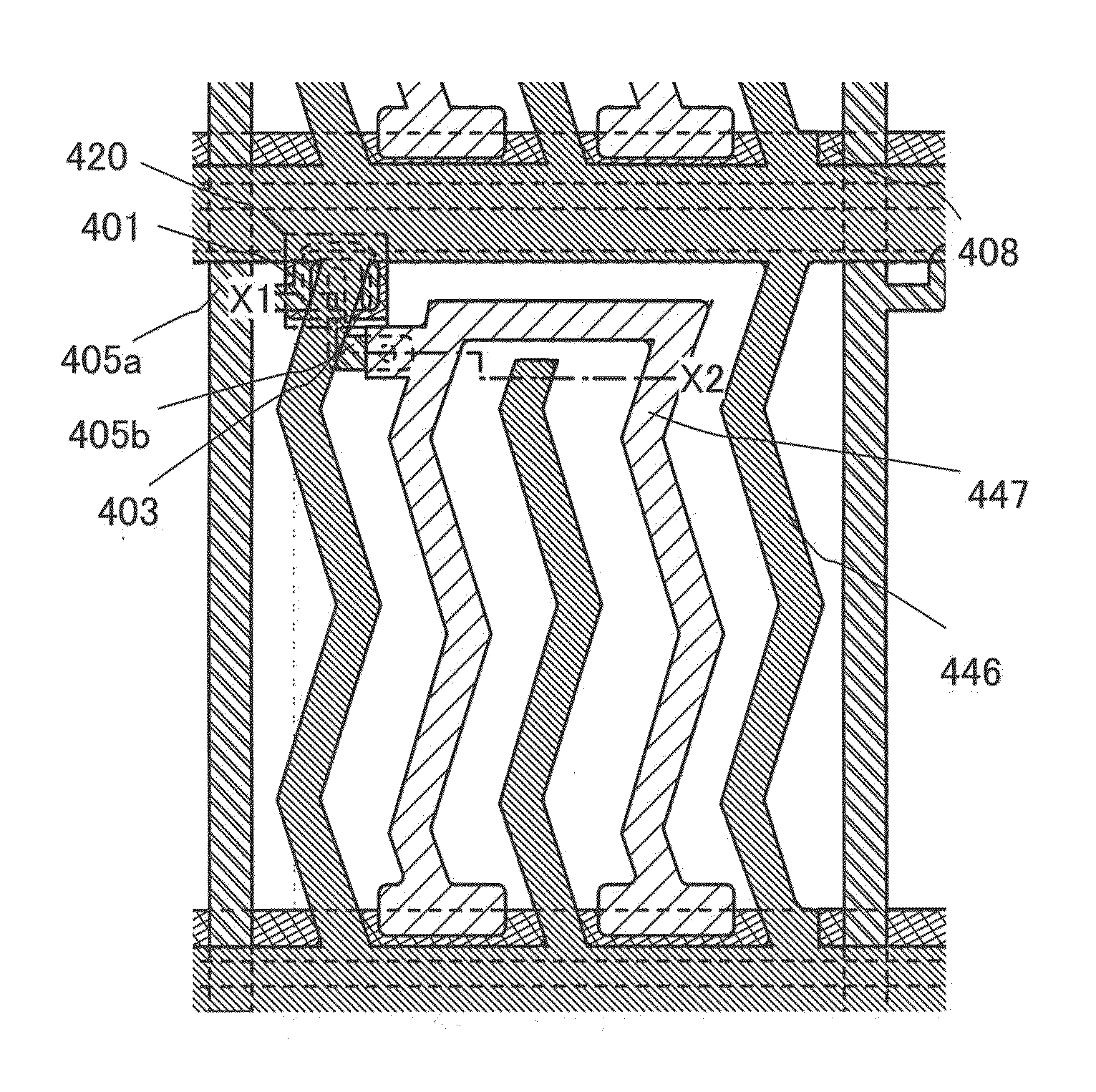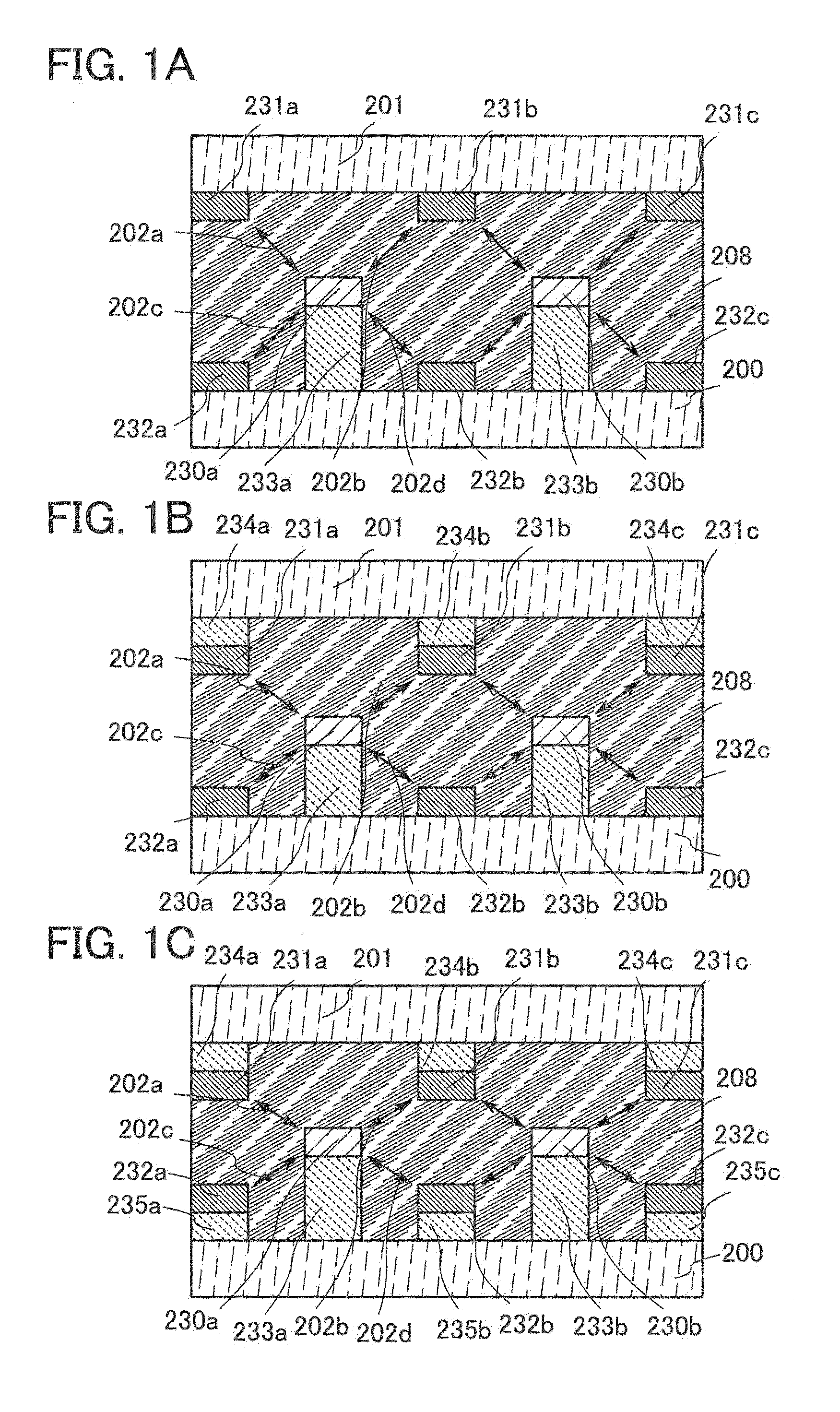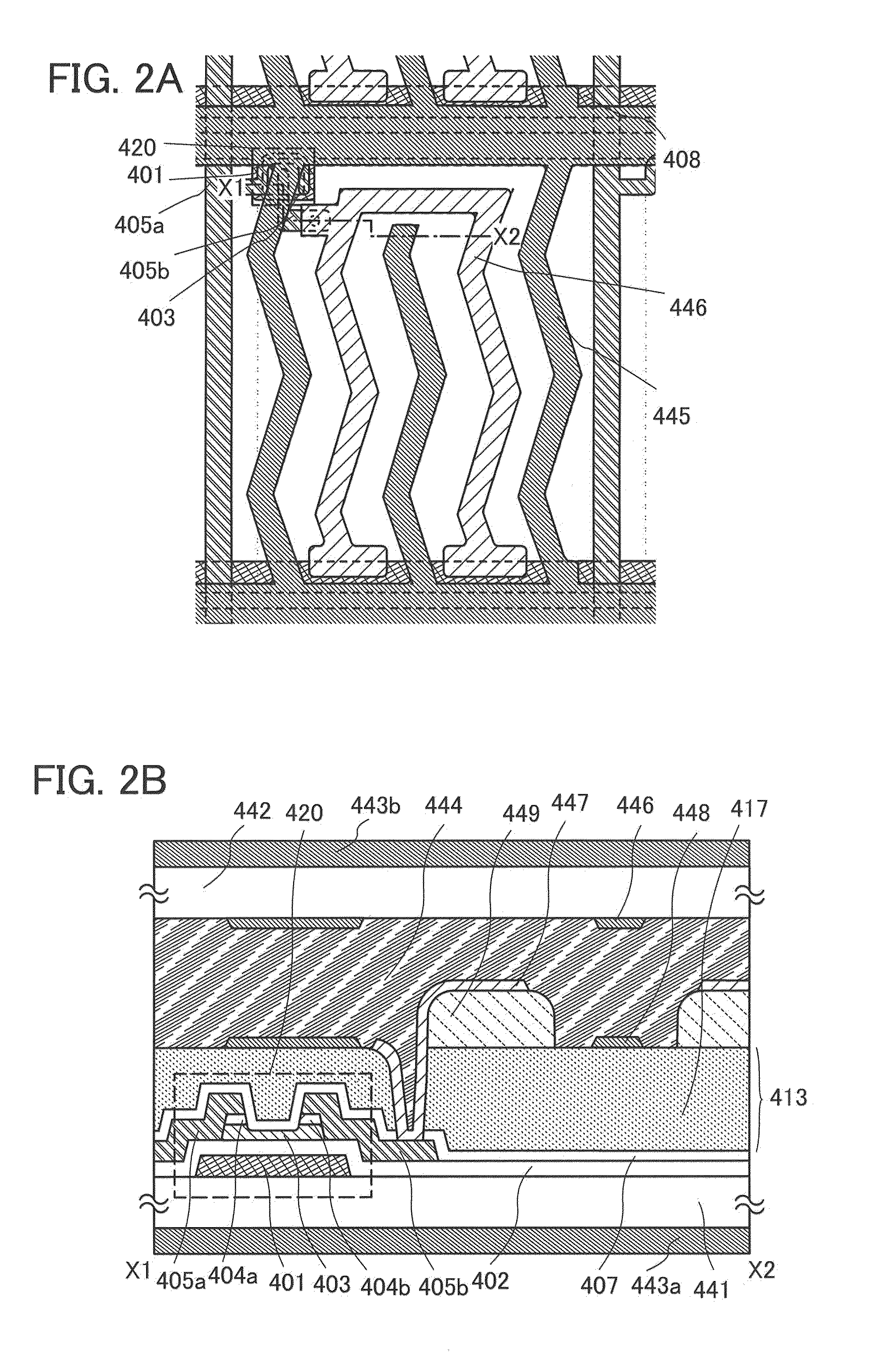Liquid crystal display device
a liquid crystal display and display device technology, applied in non-linear optics, instruments, optics, etc., to achieve the effect of increasing the contrast ratio
- Summary
- Abstract
- Description
- Claims
- Application Information
AI Technical Summary
Benefits of technology
Problems solved by technology
Method used
Image
Examples
embodiment 1
[0057]A liquid crystal display device is described with reference to FIGS. 1A to 1C,
[0058]FIGS. 19A and 19B, FIGS. 20A and 20B, FIGS. 21A and 21B, FIGS. 22A and 22B, and FIGS. 23A and 23B.
[0059]FIGS. 1A to 1C are cross-sectional views of liquid crystal display devices.
[0060]FIG. 1A illustrates a liquid crystal display device in which a first substrate 200 and a second substrate 201 are positioned to face each other with a liquid crystal layer 208 which uses a blue phase liquid crystal material sandwiched therebetween. First structure bodies 233a and 233b, pixel electrode layers 230a and 230b, and second common electrode layers 232a, 232b, and 232c are provided between the first substrate 200 and the liquid crystal layer 208. First common electrode layers 231a, 231b, and 231c are provided between the second substrate 201 and the liquid crystal layer 208. The first structure bodies 233a and 233b are provided so as to project into the liquid crystal layer 208 from a surface of the firs...
embodiment 2
[0095]The invention disclosed in this specification is applicable to either a passive matrix liquid crystal display device or an active matrix liquid crystal display device. An example of the active matrix liquid crystal display device is described with reference to FIGS. 2A and 2B, FIGS. 8A to 8D, and FIGS. 18A and 18B.
[0096]FIG. 2A is a plan view of a liquid crystal display device and illustrates one pixel. FIG. 2B is a cross-sectional view taken along the line X1-X2 in FIG. 2A.
[0097]In FIG. 2A, a plurality of source wiring layers (including a wiring layer 405a) is provided in parallel to each other (extended in a vertical direction in the drawing) and apart from each other. A plurality of gate wiring layers (including a gate electrode layer 401) is extended in a direction generally perpendicular to the source wiring layers (a horizontal direction in the drawing) and provided apart from each other. Capacitor wiring layers 408 are adjacent to the plurality of gate wiring layers and...
embodiment 3
[0156]FIGS. 4A and 4B illustrate an example in which a color filter is provided on an outer side of substrates between which a liquid crystal layer is sandwiched in Embodiment 2. Note that components in common with those in Embodiments 1 and 2 can be formed using a similar material and manufacturing method, and detailed description of the same portions and portions having similar functions is omitted.
[0157]FIG. 4A is a plan view of a liquid crystal display device and illustrates one pixel. FIG. 4B is a cross-sectional view taken along the line X1-X2 in FIG. 4A.
[0158]In the plan view of FIG. 4A, in a manner similar to Embodiment 2, a plurality of source wiring layers (including the wiring layer 405a) is provided in parallel to each other (extended in a vertical direction in the drawing) and apart from each other. A plurality of gate wiring layers (including the gate electrode layer 401) is provided apart from each other and extended in a direction generally perpendicular to the sourc...
PUM
| Property | Measurement | Unit |
|---|---|---|
| response time | aaaaa | aaaaa |
| phase transition temperature | aaaaa | aaaaa |
| temperature | aaaaa | aaaaa |
Abstract
Description
Claims
Application Information
 Login to View More
Login to View More - R&D
- Intellectual Property
- Life Sciences
- Materials
- Tech Scout
- Unparalleled Data Quality
- Higher Quality Content
- 60% Fewer Hallucinations
Browse by: Latest US Patents, China's latest patents, Technical Efficacy Thesaurus, Application Domain, Technology Topic, Popular Technical Reports.
© 2025 PatSnap. All rights reserved.Legal|Privacy policy|Modern Slavery Act Transparency Statement|Sitemap|About US| Contact US: help@patsnap.com



